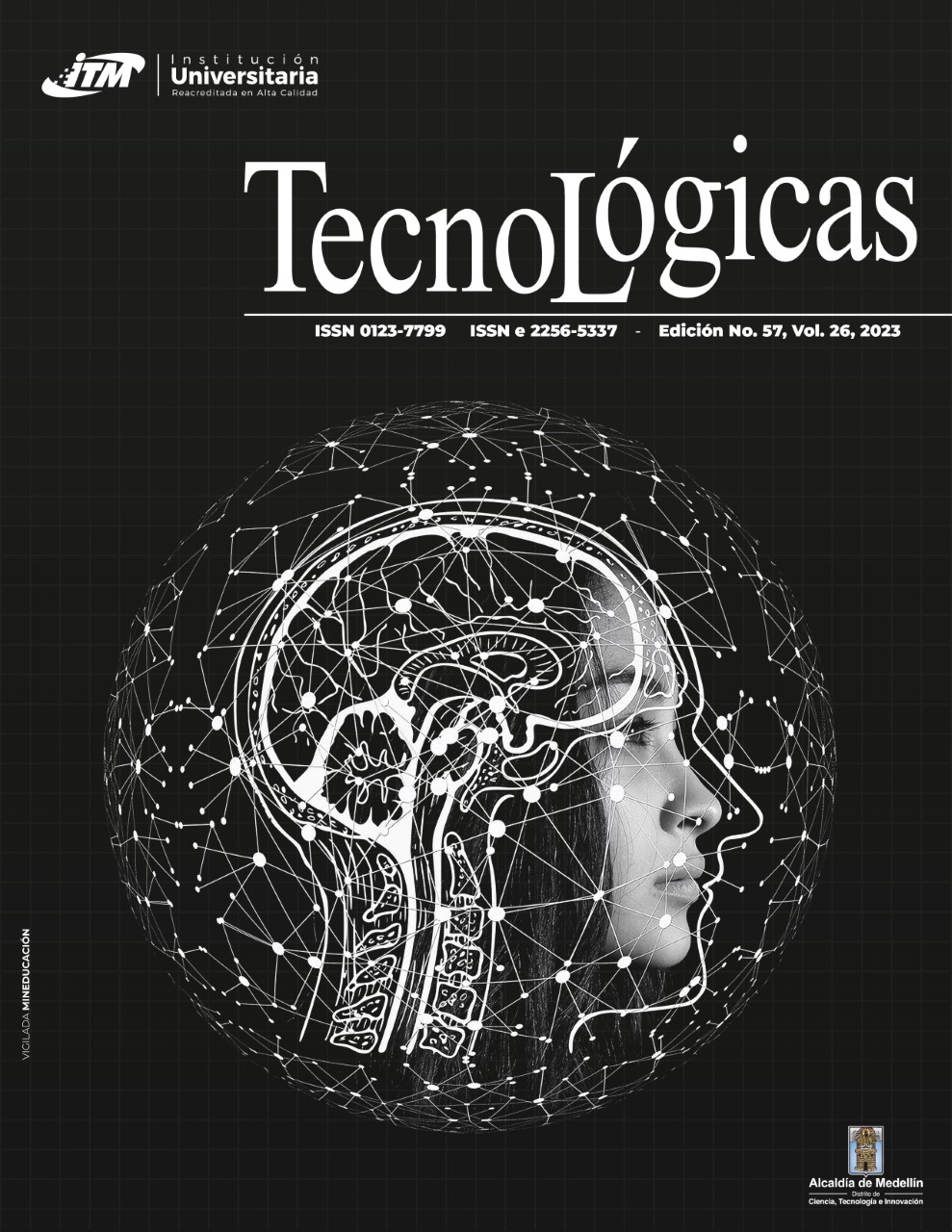Statistical Modeling to Analyze the Performance and Carbon Content of Agro-industrial Biomasses
Abstract
In agroindustry, a significant amount of waste is generated, which can be treated using various thermochemical technologies such as hydrothermal carbonization. Biomass yield and carbon content are two of the most common characteristics studied within the processes generated by these thermochemical technologies, and chemical analyses and statistical techniques are usually employed. These techniques include t-student tests, analysis of variance, or response surface models to optimize or estimate the effects of certain factors. Unlike research conducted in this field of chemistry, this study aimed to introduce alternative statistical techniques for modeling such data, proposing diverse analysis strategies to enhance understanding of the studied phenomena. To achieve this, the statistical modeling of two datasets derived from apple pomace and blueberries was presented, encompassing four factors (time, humidity, power, temperature) and two separate responses (carbon content and process yield). This study reveals that time, temperature, and humidity collectively affect process yield and carbon content in apple biomass. It is concluded that techniques like generalized linear models with beta response and generalized additive models for location, scale, and shape provide a deeper understanding of the phenomenon of interest and the ability to estimate the effects of studied factors on responses that do not naturally follow a normal distribution.
References
P. R. Yaashikaa, P. Senthil Kumar, and S. Varjani, “Valorization of agro-industrial wastes for biorefinery process and circular bioeconomy: A critical review,” Bioresour Technol, vol. 343, p. 126126, Jan. 2022. https://doi.org/10.1016/j.biortech.2021.126126
P. K. Sadh, S. Duhan, and J. S. Duhan, “Agro-industrial wastes and their utilization using solid state fermentation: a review,” Bioresour and Bioprocess, vol. 5, no. 1, pp. 1–15, Jan. 2018. https://doi.org/10.1186/s40643-017-0187-z
L. C. Freitas, J. R. Barbosa, A. L. C. da Costa, F. W. F. Bezerra, R. H. H. Pinto, and R. N. de Carvalho Junior, “From waste to sustainable industry: How can agro-industrial wastes help in the development of new products?,” Resour Conserv Recycl, vol. 169, p. 105466, Jun. 2021. https://doi.org/10.1016/j.resconrec.2021.105466
X. Yang, K. Kang, L. Qiu, L. Zhao, and R. Sun, “Effects of carbonization conditions on the yield and fixed carbon content of biochar from pruned apple tree branches,” Renew Energy, vol. 146, pp. 1691–1699, Feb. 2020. https://doi.org/10.1016/j.renene.2019.07.148
R. Ebaid, Q. Wang, S. Faisal, L. Li, and A. Abomohra, “Valorization of floral foam waste via pyrolysis optimization for enhanced phenols recovery,” Chemosphere, vol. 310, p. 136758, Jan. 2023. https://doi.org/10.1016/j.chemosphere.2022.136758
X. Cao, S. Sun, and R. Sun, “Application of biochar-based catalysts in biomass upgrading: a review,” RSC Adv, vol. 7, pp. 48793–48805, Oct. 2017. https://doi.org/10.1039/C7RA09307A
F. M. Jais, C. Y. Chee, Z. Ismail, and S. Ibrahim, “Experimental design via NaOH activation process and statistical analysis for activated sugarcane bagasse hydrochar for removal of dye and antibiotic,” J Environ Chem Eng, vol. 9, no. 1, p. 104829, Feb. 2021. https://doi.org/10.1016/j.jece.2020.104829
N. Kazemi Targhi, O. Tavakoli, and A. H. Nazemi, “Co-pyrolysis of lentil husk wastes and Chlorella vulgaris: Bio-oil and biochar yields optimization,” J Anal Appl Pyrolysis, vol. 165, p. 105548, Aug. 2022. https://doi.org/10.1016/j.jaap.2022.105548
Z. Gan, X. Zhuang, K. Cen, Y. Ba, J. Zhou, and D. Chen, “Co-pyrolysis of municipal solid waste and rice husk gasification tar to prepare biochar: An optimization study using response surface methodology,” Fuel, vol. 330, p. 125574, Dec. 2022. https://doi.org/10.1016/j.fuel.2022.125574
X. J. Lee, L. Y. Lee, B. Y. Z. Hiew, S. Gan, S. Thangalazhy-Gopakumar, and H. K. Ng, “Valorisation of oil palm wastes into high yield and energy content biochars via slow pyrolysis: Multivariate process optimisation and combustion kinetic studies,” Mater Sci Energy Technol, vol. 3, pp. 601–610, Jan. 2020. https://doi.org/10.1016/j.mset.2020.06.006
M. M. Hasan, M. G. Rasul, M. I. Jahirul, and M. M. K. Khan, “Fast pyrolysis of macadamia nutshell in an auger reactor: Process optimization using response surface methodology (RSM) and oil characterization,” Fuel, vol. 333, Part. 2, p. 126490, Feb. 2023. https://doi.org/10.1016/j.fuel.2022.126490
V. Amrhein, S. Greenland, and B. McShane, “Scientists rise up against statistical significance,” Nature, vol. 567, no. 7748, pp. 305–307, Mar. 2019. https://doi.org/10.1038/d41586-019-00857-9
D. J. Benjamin et al., “Redefine statistical significance,” Nature Human Behaviour, vol. 2, no. 1, pp. 6–10, Sep. 2017. https://doi.org/10.1038/s41562-017-0189-z
K. P. Burnham, and D. R. Anderson, “Multimodel inference: Understanding AIC and BIC in model selection,” Sociological Methods and Research, vol. 33, no. 2. pp. 261–304, Nov. 2004. https://doi.org/10.1177/0049124104268644
A. Gałecki, and T. Burzykowski. “Linear Mixed-Effects Model.” In: Linear Mixed-Effects Models Using R. A Step-by-Step Approach. Springer Texts in Statistics. New York, NY, Springer. 2013, pp 245–273. https://doi.org/10.1007/978-1-4614-3900-4_13
A. Zamora Saiz, C. Quesada González, L. Hurtado Gil, and D. Mondéjar Ruiz, “An Introduction to Data Analysis in R. Hands-on Coding, Data Mining, Visualization and Statistics from Scratch,” 2020. https://doi.org/10.1007/978-3-030-48997-7
W. W. Stroup, Generalized Linear Mixed Models: Modern Concepts, Methods and Applications, Boca Ratón, CRC Press, 2016. https://doi.org/10.1201/B13151
H. Madsen, and P. Thyregod, Introduction to general and generalized linear models, Boca Ratón, CRC Press2010. https://doi.org/10.1201/9781439891148
C. Armero, “Data Analysis Using Hierarchical Generalized Linear Models with R,” J Stat Softw, vol. 88, no. 1, pp. 1–3, Jan. 2019. https://doi.org/10.18637/jss.v088.b01
J. J. Faraway, Extending the Linear Model with R: Generalized Linear, Mixed Effects and Nonparametric Regression Models, Second Edition, New York, Chapman and Hall/CRC, 2016. https://doi.org/10.1201/9781315382722
M. D. Stasinopoulos, R. A. Rigby, G. Z. Heller, V. Voudouris, and F. De Bastiani, Flexible regression and smoothing: Using GAMLSS in R, New York, Chapman and Hall/CRC, 2017. https://doi.org/10.1201/b21973
D. M. Stasinopoulos, and R. A. Rigby, “Generalized Additive Models for Location Scale and Shape (GAMLSS) in R,” J Stat Softw, vol. 23, no. 7, pp. 1–46, Dec. 2007. https://doi.org/10.18637/JSS.V023.I07
B. Zhang et al., “Hydrothermal Carbonization of Fruit Wastes: A Promising Technique for Generating Hydrochar,” Energies, vol. 11, no. 8, p. 2022, Aug. 2018. https://doi.org/10.3390/en11082022
Downloads
Copyright (c) 2023 TecnoLógicas

This work is licensed under a Creative Commons Attribution-NonCommercial-ShareAlike 4.0 International License.
Altmetric










